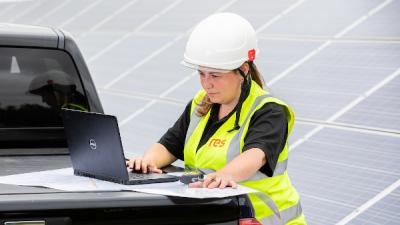Leistungen
Unsere leidenschaftlichen und erfahrenen Mitarbeiter realisieren weltweit erfolgreiche Projekte für saubere Energie.
Technologien
Wir fördern eine nachhaltige Energiezukunft mit erneuerbaren Technologien neuester Generation.
Erfahren Sie mehr über TechnologienRessourcen
Stöbern Sie in unseren neuesten Informationen. Sie finden hier Nachrichten zum Unternehmen, Kundenberichte, Brancheneinblicke und Forschungsberichte.
RessourcenKarriere
Unterstützen Sie unser Team aus passionierten Menschen, die gemeinsam eine nachhaltige, stimulierende und weltverändernde Arbeit leisten
Mehr erfahrenÜber uns
Wir leben unsere Mission, feiern die Menschen, die sie umsetzen und begrüßen den Wandel, der die Art und Weise verändert, wie die Welt Energie produziert und nutzt
Siehe über unsUnsere Büros
Wie unser Unternehmen sind wir wirklich global - aber mit Stolz lokal. Hier finden Sie Kontakt- und Standortinformationen für jede RES-Niederlassung.
Kontaktieren Sie uns-
Startseite
/
Resources
/
Blog
/
Enhancing the performance of your solar assets using proven techniques from the wind sector

With our years of experience of operating both wind and solar assets, we recognised that there were various opportunities for the solar sector to take tips from the more mature wind sector to improve the performance of operational assets.
Knowing that we could increase the availability of solar assets by enhancing traditional O&M strategies and borrowing techniques from the wind sector led our team to pull all of our in-house skills and develop a unique reliability management process.
Whereas most traditional solar O&M strategies focus more on visual inspections, RES’ reliability management service also focuses on diagnostic testing to systematically assess and mitigate risks and compliment the traditional methods.
The process involves undertaking a component-by-component assessment to measure the criticality of its function, Mean Time Between Failure (MTBF), Mean Time To Repair (MTTR) and what its current prevention controls and failure detectability is. This then allows a quantified “Lifetime Failure Risk (LFR)” to be allocated to each piece of equipment, thereby ensuring present risks can be prioritised and mitigated. Mitigation steps typically involve contingency planning for repairs, proactive purchasing of replacement parts, enhanced monitoring and inspection or upgrading of components.
At the end of the Reliability Risk Assessment, owners have a clear picture of the failure risk over the plant lifetime, measured in financial value, and a list of options to reduce the risk including a business case.
This proactive approach to maintenance helps to optimise the allocation of maintenance resources, reduce plant downtime and reduce investment in the wrong spares or in activities that add little value.
RES manages more than 1.3GW of solar across the globe and has implemented this process across the solar assets that we manage, many of which had originally struggled to achieve the budgeted availability. This process has boosted the availability of our solar assets to 99%+.
An example of the introduction of this process is shown in the below chart which shows the improvement of a 50 MW UK solar portfolio.
If implemented industry-wide, this process could unlock millions in savings for investors/owners as well as ensure that solar projects fulfil their potential and help the transition to a future where everyone has access to affordable zero carbon energy.
